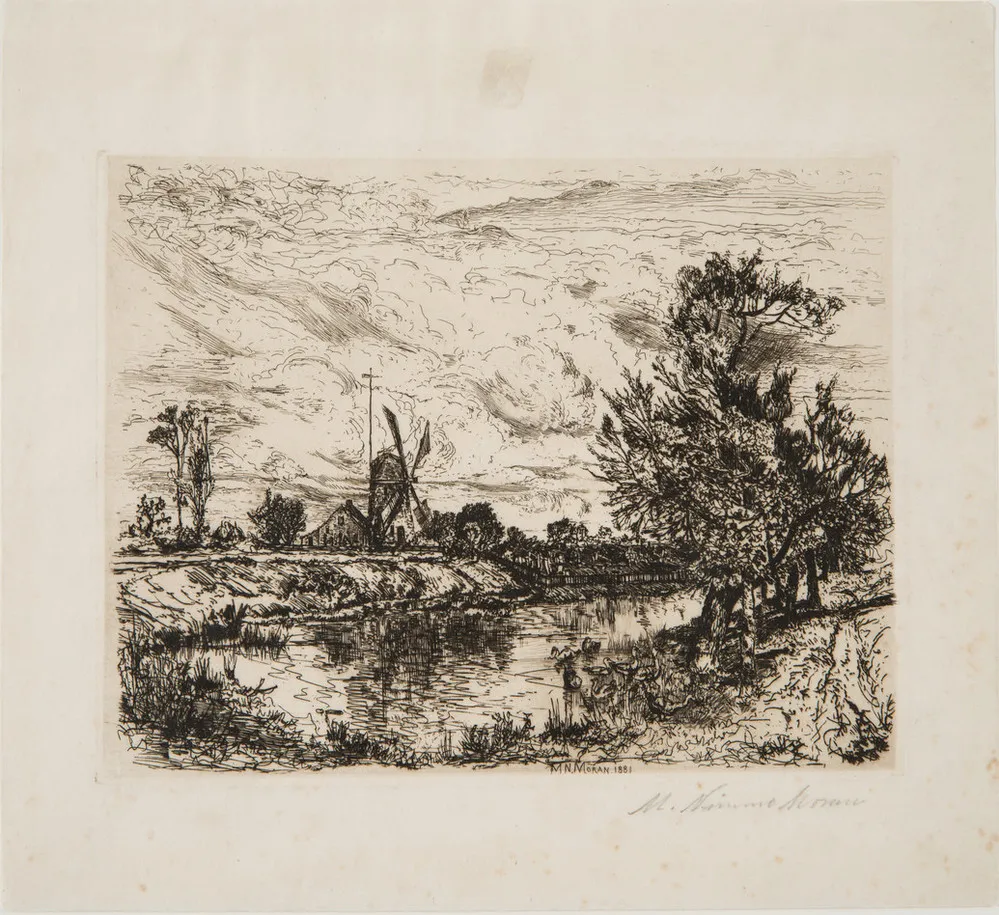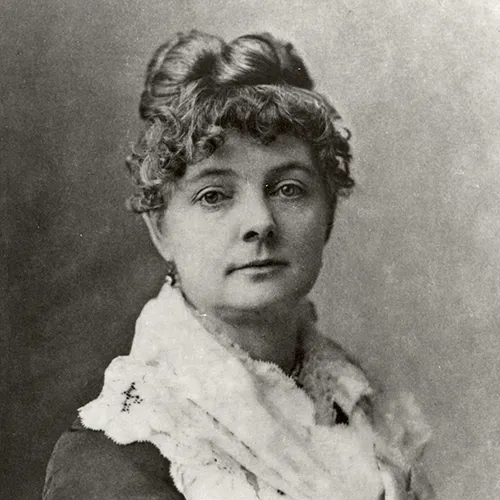The Goose Pond, East Hampton
Close up of The Goose Pond, East Hampton


During her lifetime, Mary Nimmo Moran’s etchings earned critical praise for their directness and boldness.
The artist studied drawing and painting at the Pennsylvania Academy of the Fine Arts with Thomas Moran, whom she later married. He introduced her to etching, which became her medium of choice. She worked directly from nature, etching scenes of New Jersey, Pennsylvania, and the East End of Long Island, where they made their home beginning in 1884.
The couple’s home in East Hampton overlooked Goose Pond where Moran found inspiration in the flat, grassy terrain and its abundant waterways. In this image, Moran used the delicate line of the etching needle to describe a pond that cuts the composition in half. In the distance stands Gardiner’s Mill, a landmark typical of 18th-century Dutch etchings. Moran included it in a number of her compositions. Clouds billow in the background, creating an abstract pattern that silhouettes a grove of trees.
About this print, the 1885 edition of American Etchings wrote: “Among her plates… A Goose Pond, Long Island is to be mentioned for the movement in the clouds, a difficult effect to get in etching—in fact, nine-tenths of the etched plates existing have very simple skies, in which a few scratches are made to indicate clouds, and a tint left on the plate which often tends to make the sky look heavy.”
